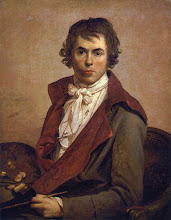Wednesday, May 5, 2010
Reform vs. Acculturation
What's the difference between a reform ideological statement and a desire, or perhaps necessity, to acculturate Judaism?
Kol Nidre

This famous prayer later becomes a symbol of "returning to Judaism" (Ba'al Tshevuah) in early 20th century American culture.
Pic of Al Jolson's the Jazz Singer, about a cantor's son trying to make it in American as a, yup, jazz singer; the first "talkie" or motion picture with sound. At the end of the film, he returns to the synagogue in time to sing Kol Nidre. (That's him in blackface)

The Hildesheimer Rabbinical Seminary (Rabbiner Seminar für das Orthodoxe Judenthum) was founded in Berlin on 22 October 1873 by Rabbi Dr. Azriel Hildesheimer for the training of rabbis in the tradition of Orthodox Judaism.
Appropriating a narrative
To what extent does the modern reform movement have anything (or nothing, hint) to do with 19th century reform is gonna be a big question in this course; take it with you to the readings.
Bells, Whistles, and Organs

Playing music on shabbat is not a melacha. It was originally made illegal due to the destruction of beit hamikdash, the end of Jewish soverignty and perhaps, to riff off a theme in our class, emancipation. As the notion of Jewish freedom enters the Jewish culture in Germany (as well as Nationalism, which we'll get to) perhaps the taboo of music on shabbat crumbled a bit. Besides, we all play music on shabbat. We clap (Clee Shiur - which Tosofot outlawed in the 14th century) and we take out the torah, with its ornamental bells ringing as we walk.
Subscribe to:
Posts (Atom)
